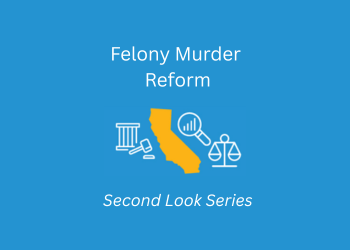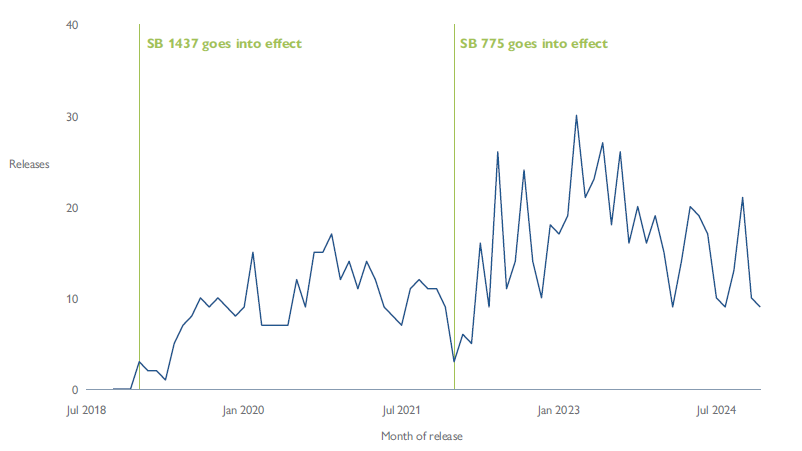- By:
- Category: Criminal justice

POLICY BRIEF: Felony Murder Reform ![]()
Note: This brief is part of the Second Look Research Series.
Before 2019, people who participated in certain felonies that resulted in a death could be convicted of murder, even if the person had neither committed the killing nor intended for it to occur. These convictions were based under the felony murder rule or the “natural and probable consequences” doctrine, which both allowed for broad liability. To address concerns about fairness and excessive punishment, Senate Bill 1437 (2018) narrowed or eliminated the application of these doctrines and allowed individuals convicted under them to petition for resentencing. In recognition that other serious convictions were similarly affected, Senate Bill 775 (2021) expanded eligibility to include those convicted of manslaughter or attempted murder under these legal theories.
This brief examines who was resentenced under felony murder reform, the offenses for which they were originally convicted, and their recidivism rates following release.
Second Look Research Series
The policy briefs focus on specific reforms:
Key Findings
1. Nearly 1,200 people were resentenced after these changes to the felony murder rule. As of December 2024, 1,172 people initially convicted under the felony murder rule have had those charges vacated, and were resentenced based on the remaining charges in their cases. Of those resentenced, 78% have since been released from prison.
Monthly releases of individuals resentenced under felony murder reform

Source: California Department of Corrections and Rehabilitation (2014-24).
2. Most people convicted of felony murder were young at the time of the offense, and for many, it was their first admission to prison. The median age at the time of the offense was just over 21, and for 75% of those resentenced, that conviction was their only prison sentence.
3. Women made up a larger share of those resentenced under felony murder reform (9%) than the share of all people released from prison in fiscal year 2018–19 (7%).
4. Recidivism rates for those resentenced under felony murder reform were notably low. New conviction rates were consistently lower than the total releases (3% within one year, 7% within two years, and 10% within three years, compared to 21%, 33%, and 42%). Of those resentenced and released, most new convictions were misdemeanors.
5. Very few people were convicted of a new serious or violent felony after resentencing under felony murder reform. Fewer than five people were convicted within one- and two- years, and only 2% (n=5) were convicted within three years. However, we can only assess full three-year outcomes for 25% of people who have been released (n=274).
Background: This research is made possible through a partnership between the California Policy Lab at the University of California and the Committee on Revision of the Penal Code, a state agency that studies and makes recommendations to improve California’s criminal legal system.
Suggested Citation: Skog, A., Lacoe, J. (2025). Felony Murder Reform. California Policy Lab, University of California. https://capolicylab.org/felony-murder-reform/
